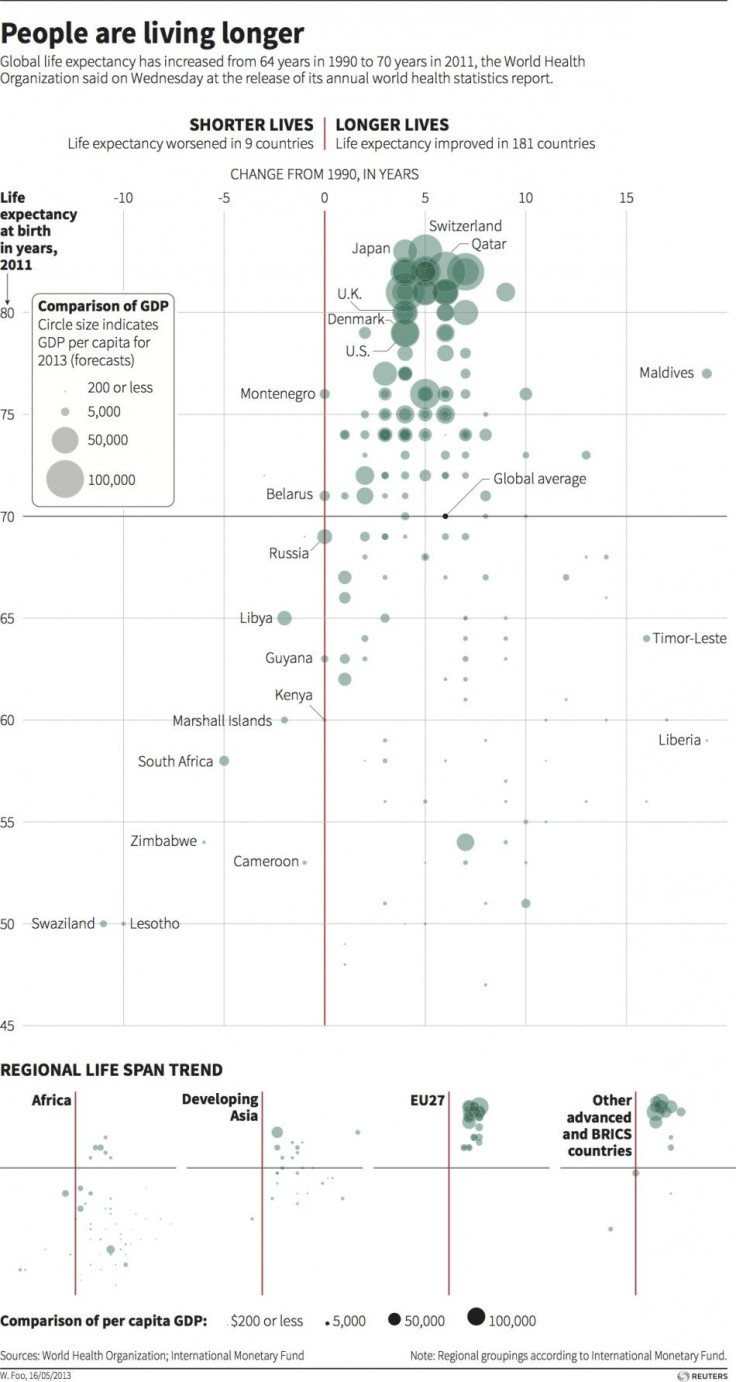Life Expectancy Worldwide Increases by 6 Years

Major infectious diseases have been plaguing different parts of the world during the previous decades. However, due to notable improvements in global disease management, prevalence and death rates associated with these illnesses have been reduced. There are also advances in the fight against some of the most dreaded illnesses. A recent analysis explains a significant progress in global life expectancy from 1990 to 2013. The Institute for Health Metrics and Evaluation (IHME) at the University of Washington spearheaded the consortium of more than 700 researchers from different countries to conduct the study.
Successful health campaigns in combating the world's main communicable diseases such as tuberculosis, measles, diarrhea and malaria had a great impact on increasing life expectancy. Still, the global fight against chronic illnesses has a long way to go. Health challenges vary for different countries as this is largely influenced by regional, economic and specific conditions. In highly industrialized areas, life expectancies have increased due to advances in cancer and cardiovascular treatment. As for developing countries, rapid decline in mortality rates for diarrhea, lower respiratory tract infections and neonatal disorders have boosted life expectancies.
While this is true, other factors have increased death rates during the same period. Chronic kidney disease, diabetes, and other endocrine disorders reduced life expectancy across many regions. Deaths due to liver disease caused by hepatitis C went up by 125 percent affecting areas in Eastern Europe and Central Asia. Other main factors include atrial fibrillation and drug use disorders. Mental disorders also have a negative impact on life expectancy, especially in North America. In South Asia, the Asia Pacific region and in some parts of sub-Saharan Africa, intentional injuries have caused rise in mortality as well. The rest are acute renal failure, sickle cell disease, diabetes and pancreatic cancer. HIV/AIDS remains the greatest cause of early deaths in sub-Saharan Africa. Life expectancy in this area has not increased. Global mortality due to HIV/AIDS increased by 334 percent since the 1990s. Civil unrest is the leading cause of premature mortality in Syria for the past three years. In August, the United Nations reported an alarming figure of 191,369 deaths in the Syrian war.
Global life expectancy for both men and women increased from 65.3 years in 1990 to 71.5 years in 2013. Male life expectancy at birth increased by 5.8 years and female life expectancy by 6.6 years. The authors of the study have mentioned some countries with remarkable improvements in the average expected length of life. In Nepal, Rwanda, Ethiopia, Niger, Maldives, Timor-Leste and Iran life expectancy has increased by more than 12 years. Even the world's most populous country, India, has made great strides in reducing death rates and increasing life expectancy.
The study projects male life expectancy to be 78.1 years and female life expectancy at 85.3 years by 2030 if trends observed for the past two decades keep up. Comprehensive details on the IHME's analysis are discussed in the Lancet.




















